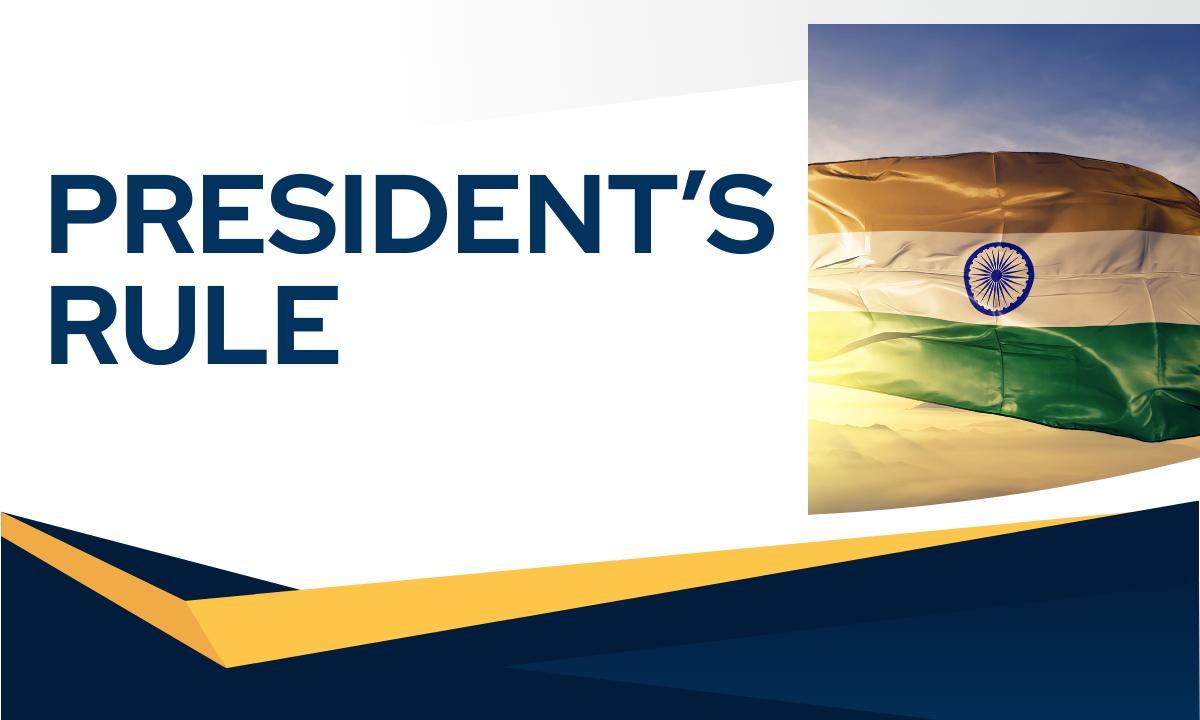+91 9990898327
Office : 632, Dr. Mukherjee Nagar, Delhi 110009
Mon-Sun: 09:00AM - 08:00PM


The President’s Rule also known as ‘Governor’s Rule’ or ‘Constitutional Emergency’ or ‘State Emergency’. However, the Constitution of India doesn’t use the word ‘Emergency’ for this situation. There are Articles 355 to 357 of Part XVII & Article 365 of Part XIX mentioned in the Constitution of India which basically deals with President’s Rule. As per Article 356, the President can proclaim President’s Rule in a state, if he/she is satisfied that a situation has arisen in which the government of a State cannot be carried on in accordance with the provisions of the Constitution. The President may act upon the report of the Governor or even without the report of the Governor.
The President’s rule can be proclaimed under two constitutional provisions, namely under article 356 which empowers the President to assume State administration, granting Union control over executive powers and allowing Parliament to exercise legislative authority. And under article 365 the President to declare governance failure if a State disregards Union directives, potentially leading to the invocation of Article 356. A process of imposition of President’s rule must be approved by both Houses of Parliament within two months. President’s rule is initially imposed for six months and can be extended upto three years. Extension beyond one year requires a National Emergency under Article 352 or an Election Commission certification that elections cannot be held in the State.
President’s rule in India imposed till date on several events. It has been imposed 134 times across 29 States and UTs since 1950, reflecting both its utility as a governance tool and concerns over its misuse. In the year, 1951 firstly it was imposed in the state of Punjab. Due to chronic political instability Manipur and Uttar Pradesh have experienced President’s rule 11 times respectively. It is to be noted here that Jammu and Kashmir holds the record with over 12 years (4,668 days) due to separatist movements. In the year 1980s the state of Punjab had witnessed over 10 years (3,878 days) during militancy. The state of Pondicherry remained under President’s rule for over seven years (2,739 days).
There is a difference between a national emergency and a president’s rule on the following aspects: a national emergency imposed under Article 352 of the COI, and on the other hand, a president’s rule imposed under Article 356 of the COI. A national emergency is declared when India’s security is threatened by war, external aggression, or armed rebellion. The president’s rule is declared when a state government fails to function as per the Constitution, unrelated to war or external aggression. In a national emergency, the state executive and legislature continue to function while the Center gains concurrent powers. In the president’s rule, the state executive is dismissed and the legislature is suspended or dissolved, with the president governing through the Governor. In the National Emergency Parliament legislature on State List subjects but cannot delegate powers. Parliament can delegate law-making powers to the President or other authorities.
To conclude this, Dr. B.R. Ambedkar hoped the president’s rule would remain a ‘dead letter’. To uphold democracy, it must be a constitutional safeguard, not a political tool.
Post a comment